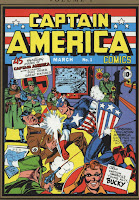
Edmond Hamilton (1904-1977) was a master storyteller. A skilled science fiction writer, he spent much of the pulp era producing some highly entertaining stories that still hold up well today.
Hamilton broke into print in
Weird Tales magazine in 1926. By 1948, he had contributed 79 short stories and novellas to that particular periodical, aside from finding success elsewhere in the pulp marketplace.
Many of his Weird Tales entries recounted the adventures of a Space Patrol in the far-future, protecting Earth (and sometimes the entire galaxy) from horrible threats. Using both human and non-human characters as his protagonists, Hamilton gave us a set of plot-driven space operas full of self-consistent super-science and well-described action set pieces. (You know, when you look at science fiction in general, it's really quite amazing how often the entire galaxy is in danger of blowing up or getting sucked into another dimension or having all intelligent life eradicated. But life, after all, would be pretty dull without the occasional galactic-level threat to spice things up.)

During the 1940s, Hamilton also gave us many of the adventures of Captain Future (a character original created by eidtor Mort Weisinger, but fleshed out by Hamilton). Captain Future (who was in reality scientist Curt Newton) was meant to appeal to teenage readers, but the stories are fun enough to appeal to adults as well.
Captain Future was essentially a superhero. Set in (naturally) the future, each novel had the good captain and his "Futuremen" (a robot, a shape-changing android and a disembodied brain) battling villiany throughout the Solar System, with occasional forays into deep space or other dimensions. And with a robot, android and dimembodied brain at your side, you really can't help but be cool.
As with his Weird Tales stories, plot was emphasized over characterization, with stories that were set in a fantasy version of our galaxy that didn't concern itself too much with scientific plausibility. But in this, Hamilton was merely playing to his strengths. He was perfectly capable of giving us likable heroes and loathsome villains, but he was at his best coming up with clever, convoluted plots that always follow their own internal logic.
As the pulp market began to collapse in the late 1940s, Hamilton took his skills into the growing comic book market. This is hardly surprising--he had been writing stories with a comic book sensibility before there even
was a comic book sensibilty.
Hamilton's most important comic stories were in the various Superman-related comics. Once again, his ability to plot out internally consistant stories set in a fantastic world of super-powered beings was his main strength.
Some of his most entertaining stuff appeared in
Adventure Comics, which featured the ever-

growing Legion of Super Heroes. A good example of his work there can be found in
Adventure #318 (March 1964), in a story titled "Mutiny."
“Mutiny” begins with the Legion helping to evacuate a planet that’s about to explode. Sun Boy, despite suffering from fatigue and overwork, is determined to lead the mission. He and a team of fellow Legionnaires load the planet’s inhabitants onto a giant space ark.
But Sun Boy makes a navigational error and the ark enters a dangerous area of space. When Cosmic Boy points out the error, Sun Boy accuses him of mutiny and uses robot assistants to toss him in the brig. When the other Legionnaires object, Sun Boy threatens to generate enough heat to blow up the ark unless they agree to abandon ship. He puts them on a small lifeboat with no food or radio and only a little bit of fuel.
The bulk of the story consists of the Legionnaires figuring out how to survive. By thinking their situation through carefully and using their various powers in clever ways, they are able to planet-hop to several locations and deal with a number of dangers.
Finally, using fuel pods salvaged from an ancient wrecked space ship, they catch up with the ark. The ark is caught in a meteor storm and Sun Boy has gone catatonic. The Legionnaires bring the ark to safety. Sun Boy is examined by a doctor and discovered to be suffering from “space fatigue.” The story ends when he is cured.
Hamilton put together fun Legion stories by coming up with countless clever variations on how the characters could work together. In “Mutiny,” each of the castaway Legionnaires has his or her moment to shine. The story builds a sincere level of tension by showing them think their way—step-by-step—out of a seemingly hopeless situation.
Over in
Superman comics, Hamilton was also plotting out some cool new elements to the Man of Steel's mythology. In
Superman #164 (November 1964), arch villain Lex Luthor challanges Superman to a duel on a planet with a red sun. Under such a sun, Superman has no superpowers, making it a fair fight.

Superman must depend more on his wits than his might, but things get complicated when the two opponents stumble across a civilization that has lost the knowledge to make use of the many ancient scientific devices lying around. Lex helps them out, fostering the attitude among them that Lex is a hero, while Superman is a villain. They even rename their planet Lexor in Lex's honor. This story ends with Superman taking Lex back to prison on Earth (but only after Lex has shown a rare burst of compassion for the Lexorians). Lexor becomes a part of Superman's mythos, with several important later stories taking place there.
Edmond Hamilton is pretty much the poster boy for what made the pulp magazines and Silver Age comic books so entertaining. simply because his storytelling skills were always infused with a sense of fun. In the pulp era, he used his prose to delight his readers. By the late 1950s & early 1960s, Hamilton and other writers such as Otto Binder, Gardner Fox and E. Nelson Bridwell were joining talented artists in building an ever-growing mythology in the DC Universe with a rapidly expanding cast of characters. It was all very silly and implausible, but it all still managed to make its own sort of sense. And, most importantly, none of these writers ever forgot about the importance of letting their readers have fun.



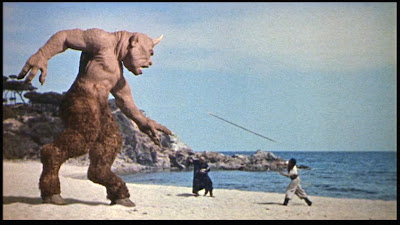

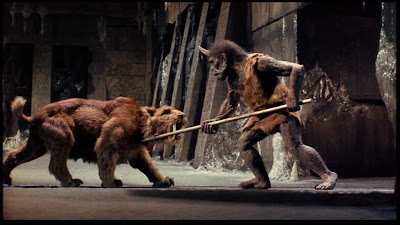





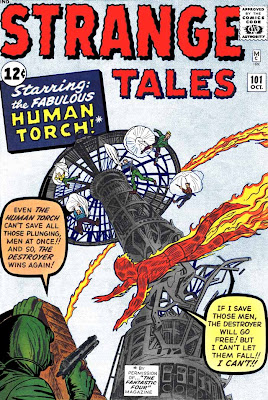



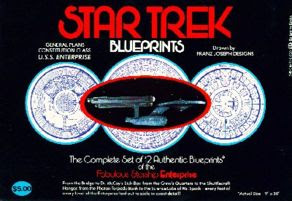


 Gotta do at least one more "last stand" post before moving on.
Gotta do at least one more "last stand" post before moving on.



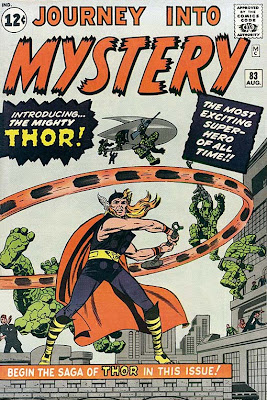



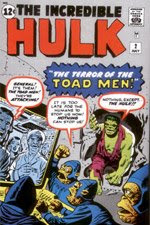

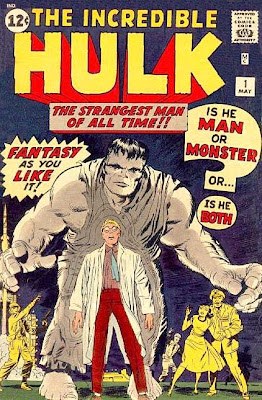





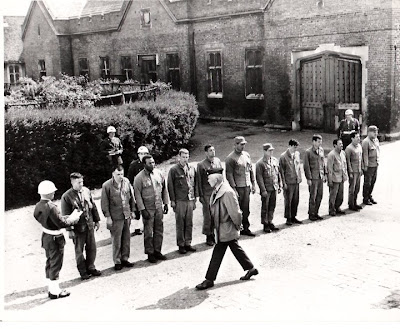
 Kelly's Heroes (1970) is another great World War II film. This one involves a small, elite armored infantry unit in France. They capture a German officer and learn about a town miles behind enemy lines that contains 16 million dollars in gold.
Kelly's Heroes (1970) is another great World War II film. This one involves a small, elite armored infantry unit in France. They capture a German officer and learn about a town miles behind enemy lines that contains 16 million dollars in gold.


 During the 1940s, Hamilton also gave us many of the adventures of Captain Future (a character original created by eidtor Mort Weisinger, but fleshed out by Hamilton). Captain Future (who was in reality scientist Curt Newton) was meant to appeal to teenage readers, but the stories are fun enough to appeal to adults as well.
During the 1940s, Hamilton also gave us many of the adventures of Captain Future (a character original created by eidtor Mort Weisinger, but fleshed out by Hamilton). Captain Future (who was in reality scientist Curt Newton) was meant to appeal to teenage readers, but the stories are fun enough to appeal to adults as well.


